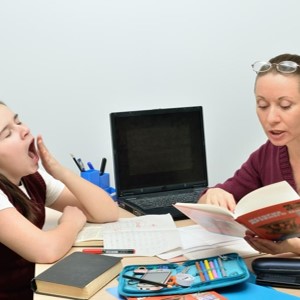All children learn at different rates and for some children learning to read is very difficult. How a child is taught to read, can determine how easy the process is for them.
Here are the 11 mistakes some teachers make, when teaching reading.
If you prefer to watch the video I did for this topic you can watch it on Youtube here or on Facebook here.
So, lets start at the beginning. The first mistake starts right here.
Mistake 1: Starting With capital letters
When teachers start teaching the alphabet they often start with the capital letters. The problem here, is that capital letters all have the same height
A B C D E F …..
See what I mean?
This makes it tricky for learners.
The lower-case or smaller letters have different heights which makes them different. This makes it easier for children to differentiate them
a b c d e f g h…
If teachers start with the lower-case letters it makes it easier for learners.
Mistake 2: Forgetting about the sounds
It is important to understand that if a child can say the alphabet then there is a good chance they already know the sounds associated with each of the letters. This is the basis of the Speech to Spelling Code™.
There are different views on the number of sounds in the English language but let’s just simplify it and say there are 46. This number is made up of 20 vowel sounds and 26 consonants sounds.
Here’s where it gets tricky though! When you say any word in the English language, you will use a combination of these 46 sounds.
Now for something even more amazing…. are you ready?
“A child learning to spell will need to learn
more than 1200 spelling variations just to
represent all those 46 sounds in spoken words.”
So now can you see why it is so important to start with the sounds.
Mistake 3: Using only black and white
Think about our reading books, most of the text is black print on white paper. Just like what you are reading right now!
It’s interesting to know that 30% of children in classrooms prefer COLOURS. It might be a different background colour, text colour or a combination of both.
Here are some examples;

Colours can also be used in words to highlight vowels and consonants, the blended consonants or the scwha-vowels (lazy vowels). Using colours within words helps readers to identify the sounds, which makes the English language easier to decode.
Mistake 4: Forgetting about chunking
What is chunking? Well it’s simply identifying the syllables or breaking words down into smaller parts. It is much easier for a child to decode a word, if it is in parts like this; car-pet (carpet) or hos-pi-tal (hospital).
Syllables can also be clapped out and counted. ‘Carpet’ has two syllables, while ‘hospital’ has three.
Mistake 5: Forgetting about rhythm
What about rhythm?
Why do songs make such great reading material and why does poetry have such power when we are learning to read? It’s the Rhythm!
Think of all the nursery rhymes and rhymes our parents used to teach us.
Mary, Mary, quite contrary, how does your garden grow? …….
Nursery rhymes, songs and poetry all use rhythm and sometimes rhyme to make the words come alive. The beat or rhythm can also be tapped and clapped along to.
Using songs and rhythm can make learning to read, fun and exciting. Poetry can also be used to help children build confidence by learning or writing a poem to recite to the class.
Kids love poetry parties.
Mistake 6: Not enough phonic readers
Each school has their own system of readers and how they breaking them into reading levels. All schools should have phonic readers at every level.
Phonic readers are books where the majority of words in them are easy to break down and sound out using the symbol/sound code. This means children can figure out words they may never have seen before or have forgotten how to spell.
There are lots of phonic reader collections out there.
Mistake 7: Focusing too much on spelling.
Correct spelling is important, but remember there are more than 1200 spelling variations in the English language, it takes time. Children need to see all the letter combinations first and see them lots of times to get them into their long-term memory.
Spelling can be challenging and children need to be encouraged to keep going. Choosing to focus on correct spelling for key words, can be a great place to start for beginner or struggling readers.
“Did you know that 50% of adults either
can’t spell or can’t spell accurately?”
Mistake 8: Forgetting all children learn at different rates.
Every child has their own pace of learning. Not every child will read or be capable of reading a chapter book, by a specific grade level. Many children will master reading chapter books in primary school, others in high school and for some this won’t happen until they leave school.
“Every child has their own set of
strengths and weaknesses.”
Mistake 9: Over complicating things
Many teachers know so much about the English language, that they over complicate things. Some computer programs do the same thing!
It’s important to keep it simple and strategic, build a child’s knowledge as you go.
Mistake 10: Talking too much
Some teachers talk too much.
Children have short attention spans, especially in today’s electronic world. They can only absorb a certain amount before they switch off, so don’t talk too much.
“Get children actively into reading and get them going.”
Mistake 11: Not reading to older children
Some teachers think that after a certain year level, they no longer need to read stories to their students.
Yet there are those Year 12 teachers who read books and novels to their students.
I know quite a few adults who don’t read well and their partners read to them at night.
The gift of a story.”
Books are amazing! They are a window to the world for many people especially those who haven’t travelled or who want to learn and experience new things.
You open a book and you get to walk through a door into a brand-new world.
Don’t make the mistake of thinking students, even big gnarly teenagers don’t need to be read to.
To watch the video I did for this topic you can watch it on YouTube here or on Facebook here and if you want to see more content just like this go here www.speechtospellingcode.com.




















Absolutely agree with every mistake listed. I watch students struggling at my son’s school and wonder what these teachers are doing.
I would like to know if you have any information on Dysgraphia and Dyspraxia. My son was diagnosed with these a few years ago and the information I’ve highlights my son’s difficulty, however I’m struggling to find something new that will actually help my son instead of just giving him a label.
Thanks
Hi Andy, I like the program Touch Type Read Spell, you can find it here. It is the best program for helping children with Dysgraphia and Dyspraxia on the market and it is really reasonable. Good for kids and adults too. Use the code DD101 to get a 10% discount https://www.dyslexiadaily.com/product/ttrs-touch-type-read-spell/ He will be typing in no time and feeling more confident too. My children have all used this program and saw massive gains. Kind regards Liz D